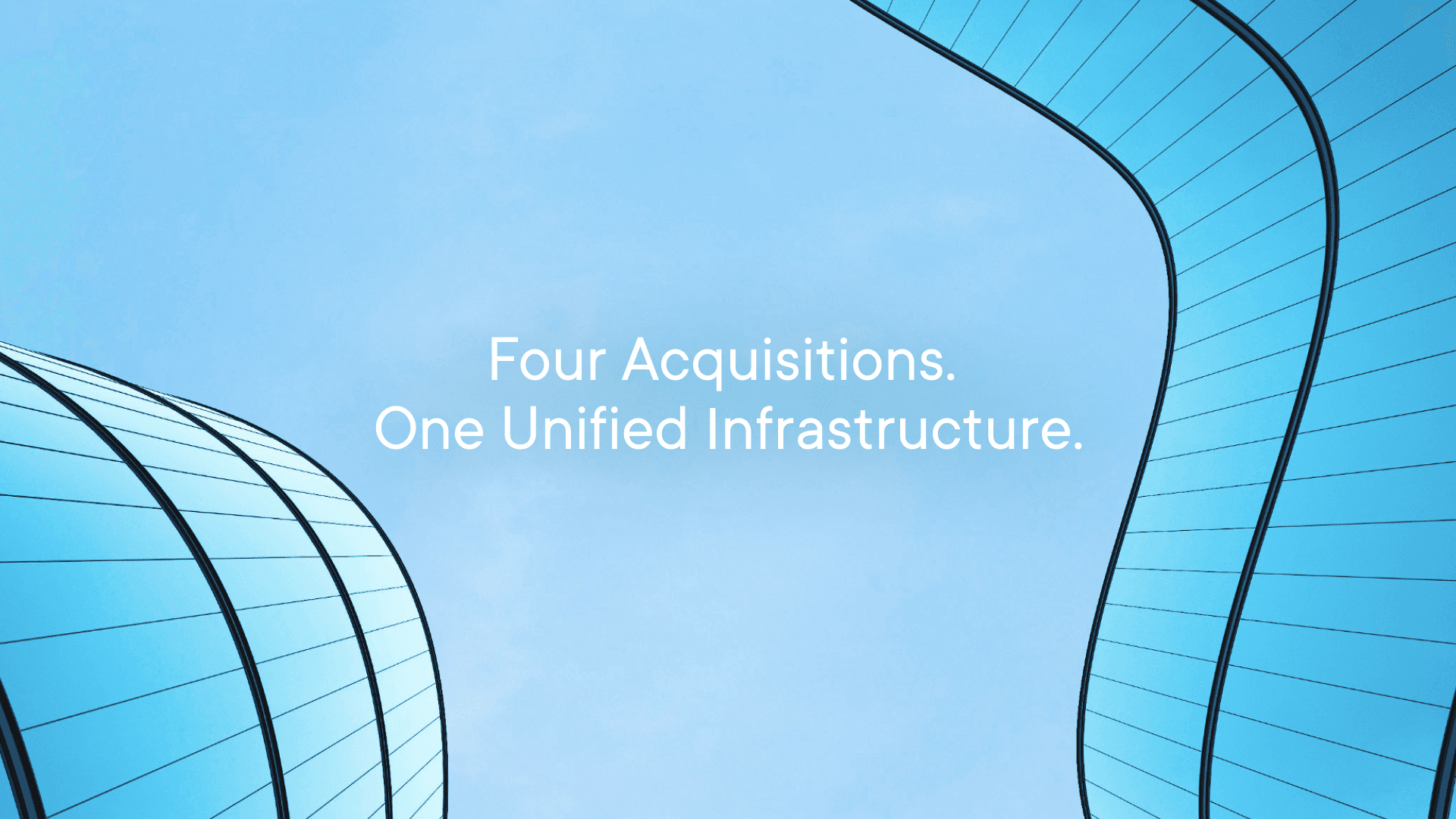Ripple was founded on the conviction that blockchain would become the global financial infrastructure of the future, enabling more affordable financial services for more people and businesses around the world. Early on, we bet on the promise of institutional DeFi to create a better and more fair financial system, but at the time, crypto and blockchain largely lacked the infrastructure, liquidity, trust and regulatory clarity needed for widespread institutional adoption. To put it into perspective, the price of bitcoin (BTC) was less than $20, Ethereum didn’t exist yet, and there were only a handful of exchanges with a few million dollars a year in volume.
Fast forward 10+ years and the first BTC and ETH Spot ETFs have been approved in the U.S.; BlackRock launched its first tokenized fund issued on a public blockchain; the EU is rolling out comprehensive crypto rules with MiCA; and financial institutions and payments companies like Fidelity, Itaú Unibanco, Stripe and PayPal are making it easy for their customers to trade, hold and use crypto assets. It goes without saying that the crypto market has come a long way, as has the broader acceptance of crypto.
As the industry and market continue to mature, Ripple has evolved in parallel to address the opportunity in front of us. Having worked with financial institutions for many years, we’ve validated blockchain’s promise of faster, lower cost, and more reliable financial services in scores. But, they need simple, trusted, reliable digital asset infrastructure to integrate blockchain into their businesses. Just as there are key components to running an Internet-based business— storage, compute, networking, etc.—institutions need on- and off-ramps, custody, and liquidity.
With these core elements, those building the financial services of the future can create, store, trade, and move value around the world to solve today’s real and acute problems, and imagine and invent tomorrow’s possibilities.
Evolving Ripple’s Product Suite
The first use case we tackled was cross-border payments, leveraging the XRP Ledger (XRPL) and its native digital asset XRP to move value seamlessly. XRPL’s out-of-the-box capabilities (speed, low-cost, transparency and scalability) make it ideal for addressing the challenges inherent in legacy financial systems.
Payments served as a perfect entry point, given its clear pain points—high fees, slow transfer times, lack of transparency, and high error rates—built on decades-old technology. Today our cross-border payments solution, Ripple Payments, has near-global coverage with 80+ payout markets, which represent more than 90% coverage of the daily FX markets, processing more than $50B in volume.
While we continue to view payments as the first killer application (and most proven!) for crypto, Ripple offers more than payments today. We provide financial institutions with simple, secure, compliant digital asset infrastructure which meaningfully improves how those customers create, store, trade and move value.
A significant step in making this future a reality was the acquisition of Metaco in 2023 - a digital asset custody technology provider serving tier-one banks across the globe including BBVA Switzerland, HSBC, Société Générale - FORGE and more. We are now better positioned than ever to deliver on the product roadmap for our customers globally, and moving forward, Metaco will be known as Ripple Custody. We’re continuing to scale the team and custody business, as well as opening a new office in Geneva (coming soon!) to address our growing custody footprint.
We’ve also decided to fold our Liquidity Hub product into our payments solution, bringing the benefits of both offerings into a singular experience. Ripple’s own experience building a payments business and mastering how to deliver liquidity to the right destination, for the right cost, at the right time taught us a lot about liquidity management. We’re applying the lessons we learned from our experience to our customers’ experiences.
Bridging TradFi and Crypto
Earlier this year, we announced our intention to launch a stablecoin, called Ripple USD (RLUSD) on the XRP Ledger and Ethereum blockchains. This is a milestone for Ripple’s business and a significant next step in bridging the gap between traditional finance and crypto. Once Ripple USD launches, we plan to integrate it into Ripple Payments, alongside XRP, to serve customers' growing needs and evolving use cases in cross-border payments.
We’ve spent years building a robust global payout network, which allows customers to off-ramp funds in the destination and currency of their choice. Alongside other stablecoins, Ripple USD will enable efficient on-ramps and facilitate fast and low-cost global payments for many Ripple Payments customers.
XRPL is the blockchain of choice for institutional DeFi use cases due to its reliability, high performance, low transaction costs and speed. Institutional DeFi requires high-quality stablecoins for on-ramping, trading, and more. Bringing trusted stablecoins to XRPL from companies with a compliance-first mindset unlocks new capabilities, use cases, and users for more DeFi developers. XRP, is still the universal bridge asset for the XRPL, and is especially useful to create liquidity for long-tail assets. For example, in regions where the cost to move money across borders is particularly high due to the lack of liquidity between currencies, XRP remains the most efficient.
XRP Ledger: Built for Business
XRPL remains the primary blockchain that underpins our products because it’s fast, highly efficient, battle-tested, and supports large-scale use cases. Since 2012, it has processed 2.8B+ transactions without failure or security breach.
It also has a number of highly sophisticated financial tools built in at the protocol layer, such as its native decentralized exchange (DEX). XRPL was the first blockchain to feature a built-in DEX, allowing users to offer and trade any type of token without a middleman or centralized exchange. Additional functionality (like auto-bridging and pathfinding) lets users find better deals by finding trades with multiple tokens in a row.
Ripple, alongside many projects like Zoniqx, Orchestra Finance, CredeFi, Sologenic, Archax and more, are building applications on top of XRPL to move TradFi to modern financial tools. Over time, we see an opportunity to integrate more of the XRP Ledger’s technically and financially sophisticated features directly into Ripple’s business—bringing the benefits of decentralized finance to our customers around the world in a secure and compliant fashion.
Crypto Building Blocks for the Enterprise
Ripple has proven its longevity by weathering the storms through every crypto bull and bear cycle. Since day one, we have taken the long-term view and intentionally focused on working with financial institutions, regulators and policymakers to transform the legacy system from the inside out.
It's our ambition to be the #1 digital asset infrastructure provider for financial services. We envision being a one-stop shop for enterprises that want the benefits of integrating blockchain into their business but don’t have the expertise, resources, or interest in building and maintaining the technology in-house.
Ripple is one of the few players in the space uniquely positioned to deliver on holistic digital asset infrastructure that bridges TradFi and crypto through our years of experience living and working within both worlds. Ripple has the credibility, reputation, trust, advanced understanding and operations for core services like crypto on and off-ramps, liquidity, custody and compliance. And we’ll continue to evolve our product suite to provide the solutions that our customers want and need.
We got into this business because we believe blockchain technology and digital assets can provide faster, better and cheaper financial services compared to incumbent technologies. We’ll continue to provide best in class solutions, combined with innovative technology to bridge the gap between TradFi and Web3 to make that vision a reality.
Contact our team to learn more and start building your blockchain business today.







